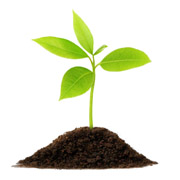Agronomy and Horticulture Department
The Interaction of Light with Biological Molecules
Date of this Version
2003
Document Type
Article
Citation
Plant and Soil Sciences eLibrary (PASSeL) Lesson
This manuscript has been assigned Journal Series No. 03-8, College of Agricultural Sciences and Natural Resources, University of Nebraska.
Abstract
Overview
This lesson describes the nature of light, the energy within photons and how this energy may be transferred to biological molecules. In addition, the beneficial and harmful methods for de-exciting molecules will be described.
Objectives
At the completion of this lesson, students will be able to:
- Describe the nature of photons as quanta or packets of energy
- Predict the relative energy in a photon from its wavelength
- Describe the absorption process in terms of electronic state transitions
- Describe four different pathways for de-excitation:
- Fluorescence or thermal decay
- Transfer of energy
- Triple state conversion
- Photochemistry
- Differentiate between singlet and triplet electronic states
- Understand photosensitization in terms of free radical generation of reactive oxygen
Modules:
- Lesson home
- Introduction for the Interaction of Light with Biological Molecules
- Equilibrium
- The Nature of Light
- Light Absorption by Biomolecules
- De-excitation Pathways
- Photochemistry
- Photodynamic Biological Damage from Light
- Summary for the Interaction of Light with Biological Molecules
- References for the Interaction of Light with Biological Molecules
- Glossary
- Videos
COinS


Comments
Copyright © 2003 John Markwell and Deana Namuth. Used by permission.
Peer reviewed web lesson JNRLSE approved 2003
Development of this lesson was supported in part by Cooperative State Research, Education, & Extension Service, U.S. Dept. of Agriculture under Agreement Number 98-EATP-1-0403 administered by Cornell University and the American Distance Education Consortium (ADEC). Any opinions, findings, conclusions, or recommendations expressed in this publication are those of the authors and do not necessarily reflect the view of the U.S. Department of Agriculture.